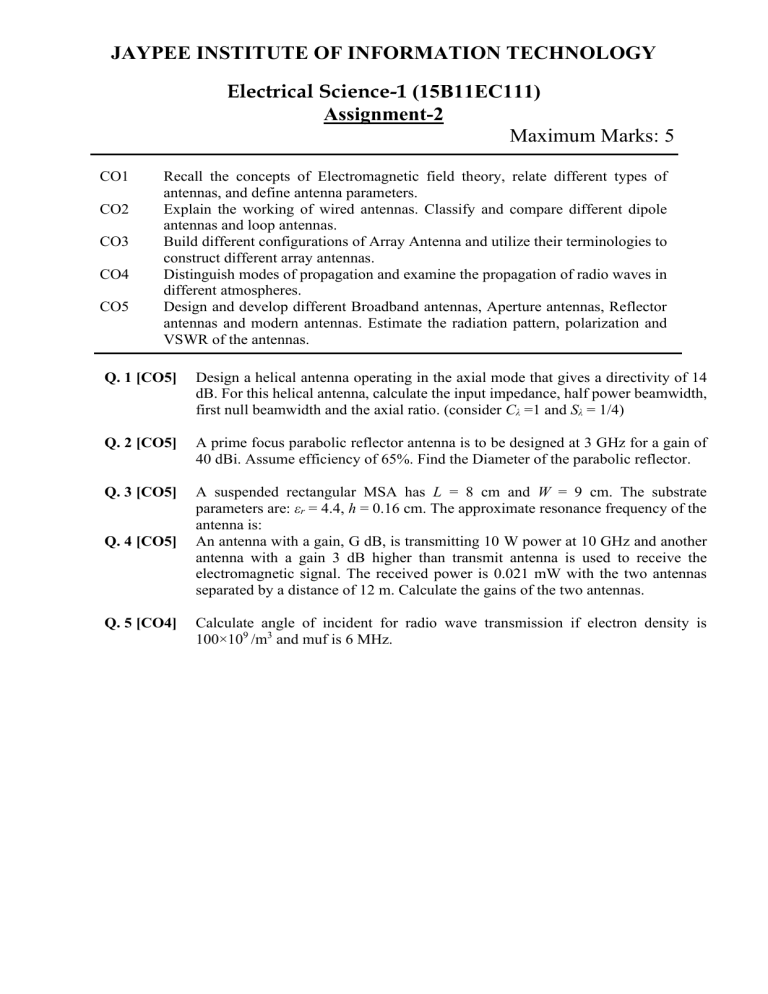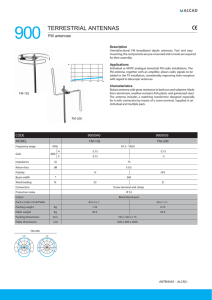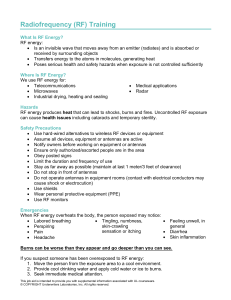
JAYPEE INSTITUTE OF INFORMATION TECHNOLOGY Electrical Science-1 (15B11EC111) Assignment-2 Maximum Marks: 5 CO1 CO2 CO3 CO4 CO5 Recall the concepts of Electromagnetic field theory, relate different types of antennas, and define antenna parameters. Explain the working of wired antennas. Classify and compare different dipole antennas and loop antennas. Build different configurations of Array Antenna and utilize their terminologies to construct different array antennas. Distinguish modes of propagation and examine the propagation of radio waves in different atmospheres. Design and develop different Broadband antennas, Aperture antennas, Reflector antennas and modern antennas. Estimate the radiation pattern, polarization and VSWR of the antennas. Q. 1 [CO5] Design a helical antenna operating in the axial mode that gives a directivity of 14 dB. For this helical antenna, calculate the input impedance, half power beamwidth, first null beamwidth and the axial ratio. (consider Cλ =1 and Sλ = 1/4) Q. 2 [CO5] A prime focus parabolic reflector antenna is to be designed at 3 GHz for a gain of 40 dBi. Assume efficiency of 65%. Find the Diameter of the parabolic reflector. Q. 3 [CO5] A suspended rectangular MSA has L = 8 cm and W = 9 cm. The substrate parameters are: εr = 4.4, h = 0.16 cm. The approximate resonance frequency of the antenna is: An antenna with a gain, G dB, is transmitting 10 W power at 10 GHz and another antenna with a gain 3 dB higher than transmit antenna is used to receive the electromagnetic signal. The received power is 0.021 mW with the two antennas separated by a distance of 12 m. Calculate the gains of the two antennas. Q. 4 [CO5] Q. 5 [CO4] Calculate angle of incident for radio wave transmission if electron density is 100×109 /m3 and muf is 6 MHz.



![EEE 443 Antennas for Wireless Communications (3) [S]](http://s3.studylib.net/store/data/008888255_1-6e942a081653d05c33fa53deefb4441a-300x300.png)